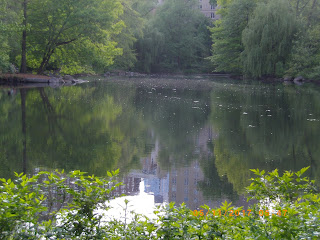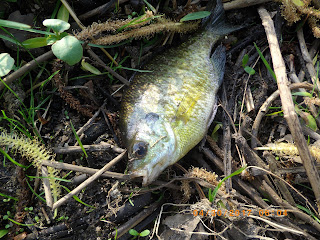Looking east, an another kettle pond. Last season I caught several small carp
here by the lily pads. This year things are different. Algae ! While there are
open spots on the surface, there is a green weed growing underwater too.
Flies are covered in this mess after the fly line is retrieved.
A trumpet swan patrols as it's spouse sits on their nest.
What you see in this picture is a combination of lily pads and an invasive weed
clogging the ponds surface. In the past this pond was fairly clear as far as
visibility goes. On this visit I could not see any fish in the water.
The south side of this pond has been "opened up" to permit fishing and hiking on the
south shore. Trees and debris have been removed to establish fishing beats.
Tucked away in Crocheron Park in Queens, Golden Pond is one of the lesser known bodies of water in NYC. Compared to nearby Oakland Lake it is small but it is a pond that can pack a big wallop. While the western half of the lake is shallow, muddy, and full of carp; the southeastern end of the lake is home to some surprisingly large largemouth bass and crappies. A low amount of aquatic vegetation in spring contributes positively to the angling experience as there is less chance of having your tackle caught in the weeds.
Physical Features
Area: 1.5 acres
Depth: 4 feet
Depth: 4 feet

























